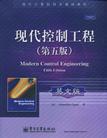现代控制工程
出版时间:2011-1 出版社:电子工业出版社 作者:尾形克彦 页数:894
Tag标签:无
前言
本书介绍了控制系统分析和设计中的一些重要概念。这是一本清晰易懂,适用于高等院校控制系统课程的教科书,是为学习电气、机械、航空航天或化学工程的高年级本科生编写的。学习本书之前应具备下列预备知识:微分方程方面的基础课程,拉普拉斯变换,向量矩阵分析,电路分析,力学和热力学基础。在这一版中,本书进行了下列主要修订:增加了利用MATLAB求控制系统对各种输入量响应的内容证明了利用MATLAB实现计算最佳化方法的有效性全书增加了一些新的例题删去了前一版中的次要材料,以便为更重要的主题提供空间。书中删去了信号流图和拉普拉斯变换一章,但新增了拉普拉斯变换表及利用MATLAB的部分分式展开(见附录A和附录B)在附录c中,提供了对向量矩阵分析的简短概括;这将有助于读者求解,l×,l矩阵的逆矩阵,而这种求解有可能包含在控制系统的分析和设计中。本书的这一版共10章。其内容概括如下。第1章是对控制系统的简介。第2章涉及控制系统的数学模型,并且介绍了非线性数学模型的线性化方法。第3章导出了机械系统和电系统的数学模型。第4章讨论流体系统(诸如液位系统、气动系统和液压系统)和热力系统的数学模型。第5章处理控制系统的瞬态响应和稳态分析,广泛采用MATLAB获取瞬态响应曲线。为了进行控制系统的稳定性分析,本章介绍了劳斯稳定判据和赫尔维茨稳定判据。第6章讨论了控制系统的根轨迹分析和设计,包括正反馈系统和条件稳定系统。关于用。MATL,AB绘制根轨迹,在本章中进行了详细讨论。本章还包括了利用根轨迹法设计超前、滞后和滞后一超前校正装置。第7章讨论控制系统的频率响应分析和设计,并且以容易理解的方式,介绍了奈奎斯特稳定判据。用来进行超前、滞后和滞后一超前校正装置设计的伯德图方法,也在本章中进行了介绍。第8章涉及基本的和变形的PID控制器。本章详细地讨论了为获得PID控制器的最佳参数值,特别是为满足阶跃响应特性的要求而采用的计算方法。第9章介绍控制系统的状态空间分析。本章详细地讨论了可控性和可观测性概念。第10章涉及控制系统的状态空间设计。讨论包括极点配置、状态观测器和二次型最佳控制。本章最后对鲁棒控制系统进行了初步讨论。
内容概要
本书为自动控制系统的经典教材,详细介绍了连续控制系统(包括电气系统、机械系统、流体动力系统和热力系统)的数学模型建模方法,动态系统的瞬态和稳态分析方法,根轨迹分析和设计方法,频率域的分析和设计方法,以及pid控制器和变形pid控制器的设计方法;同时还比较详细地介绍了现代控制理论中的核心内容,状态空间分析和设计方法。最后还简要地介绍了20世纪80年代至90年代发展起来的称为“后现代控制理论”的鲁棒控制系统。全书自始至终,贯穿了用matlab工具分析和设计各类控制系统问题。 本书可作为高等学校工科(电气、机械、航空航天、化工等)高年级学生自动控制系统课程的教材,也可供与自动控制系统方面的技术相关的教师、研究生、科研和工程技术人员参考。
作者简介
作者:(美国)尾形克彦(Katsuhiko Ogata)
书籍目录
chapter 1 introduction to control systems 1-1 introduction 1-2 examples of control systems 1-3 closed-loop control versus open-loop control 1-4 design and compensation of control systems 1-5 outline of the book chapter 2 mathematical modeling of control systems 2-1 introduction 2-2 transfer function and impulse-response function 2-3 automatic control systems 2-4 modeling in state space 2-5 state-space representation of scalar differential equation systems 2-6 transformation of mathematical models with matlab 2-7 linearization of nonlinear mathematical models example problems and solutions problems chapter 3 mathematical modeling of mechanical systems and electrical systems 3-1 introduction 3-2 mathematical modeling of mechanical systems 3-3 mathematical modeling of electrical systems example problems and solutions problems chapter 4 mathematical modeling of fluid systems and thermal systems 4-1 introduction 4-2 liquid-level systems 4-3 pneumatic systems 4-4 hydraulic systems 4-5 thermal systems example problems and solutions problems chapter 5 transient and steady-state response analyses 5-1 introduction 5-2 first-order systems 5-3 second-order systems 5-4 higher-order systems 5-5 transient-response analysis with matlab 5-6 routh's stability criterion 5-7 effects of integral and derivative control actions on system performance 5-8 steady-state errors in unity-feedback control systems example problems and solutions problems chapter 6 control systems analysis and design by the root-locus method 6-1 introduction 6-2 root-locus plots 6-3 plotting rootloci with matlab 6-4 root-locus plots of positive feedback systems 6-5 root-locus approach to control-systems design 6-6 lead compensation 6-7 lag compensation 6-8 lag-lead compensation 6-9 parallel compensation example problems and solutions problems chapter 7 control systems analysis and design by the frequency-response method 7-1 introduction 7-2 bode diagrams 7-3 polar plots 7-4 log-magnitude-versus-phase plots 7-5 nyquist stability criterion 7-6 stability analysis 7-7 relative stability analysis 7-8 close(i-loop frequency response of unity-feedback systems 7-9 experimental determination of transfer functions 7-10 control systems design by frequency-response approach 7-11 lead compensation 7-12 lag compensation 7-13 lag-lead compensation example problems and solutions problems chapter 8 pid controllers and modified pid controllers 8-1 introduction 8-2 ziegler-nichols rules for tuning pid controllers 8-3 design of pid controllers with frequency-response approach 8-4 design of pid controllers with computational optimization approach 8-5 modifications of pid control schemes 8-6 two-degrees-of-freedom control 8-7 zero-placement approach to improve response characteristics example problems and solutions problems chapter 9 control systems analysis in state space 9-1 introduction 9-2 state-space representations of transfer-function systems 9-3 transformation of system models with matlab 9-4 solving the time-invariant state equation 9-5 some useful results in vector-matrix analysis 9-6 controllability 9-7 observability example problems and solutions problems chapter 10 control systems design in state space 10-1 introduction 10-2 pole placement 10-3 solving pole-placement problems with matlab 10-4 design of serve systems 10-5 state observers 10-6 design of regulator systems with observers 10-7 design of control systems with observers 10-8 quadratic optimal regulator systems 10-9 robust control systems example problems and solutions problems appendix a laplace transform tables appendix b partial-fraction expansion appendix c vector-matrix algebra references index
章节摘录
插图:Whether a linear system is stable or unstable is a property of the system itself and does not depend on the input or driving function of the system. The poles of the input,or driving function, do not affect the property of stability of the system, but they contribute only to steady-state response terms in the solution. Thus, the problem of a bsolutestability can be solved readily by choosing no closed-loop poles in the right-half s plane,including the axis. (Mathematically, closed-loop poles on the axis will yield oscillations, the amplitude of which is neither decaying nor growing with time. In practicalcases, where noise is present, however, the amplitude of oscillations may increase at a rate determined by the noise power level. Therefore, a control system should not have closedloop poles on the axis.)Note that the mere fact that all closed-loop poles lie in the left-half s plane does not guarantee satisfactory transient-response characteristics. If dominant complex conjugateclosedloop poles lie close to the axis, the transient response may exhibit excessiveoscillations or may be very slow. Therefore, to guarantee fast, yet well-damped, transient-response characteristics, it is necessary that the closed-loop poles of the system lie in a particular region in the complex plane, such as the region bounded by the shaded a reain Figure 5-17.
编辑推荐
《现代控制工程(第5版)(英文版)》是国外计算机科学教材系列。
图书封面
图书标签Tags
无
评论、评分、阅读与下载
用户评论 (总计12条)
- 超级经典的控制原理教材,大牛Ogata的名著,比国内胡寿松老师等写得好。当年就看过第4版的英文原版,一路做着习题过来,这么多年,还是很怀念该书给我练下的内功,故特意收藏一本。每章都有MATLAB程度,例子全是经典工程范例,给人一种实用性很强的感觉。看这本书,你不会害怕一堆微分方程带来的挑战,反而会觉得这书带着你跟微分方程做了好朋友。小瑕疵是,书的右边印刷得太靠右了,好像页边距只有4、5mm的感觉,原版页边距是足够的,很舒服,希望跟出版社交流下,毕竟工科的书使用频率是很高的,印刷得太靠右边容易损破。
- 真心很不错,速度很快。而且还打折,很不错的书。学控制的经典。
- 发送货物的速度挺快。但是书有破损,质量稍欠佳。
- 控制类的经典书籍,很给力的书
- 内容很一般,没有宣传的好
- 导师推荐的,应该有一定难度
- 不愧是经典教材,这本书的内容编排上非常清晰,很赞。
- 替别人买的,印刷什么的还不错,内容无从评价
- 很经典的书,送货很快,书的纸质有些差(刚拿到手的时候看着是这样),看着有种盗版书的感觉。书的排版太紧凑,刚看不是很习惯。看习惯了还可以。
- 快递很快..书很符合
- 好书好书好书好书!!!!!
- 应该说这是一本很完美的教材,很容易懂,不虚名啊.既可以作为系统学习之用,也可以作为工具书,随时查阅.国内控制理论中算很优秀的要数吴麒先生的自动控制原理,也推荐.
